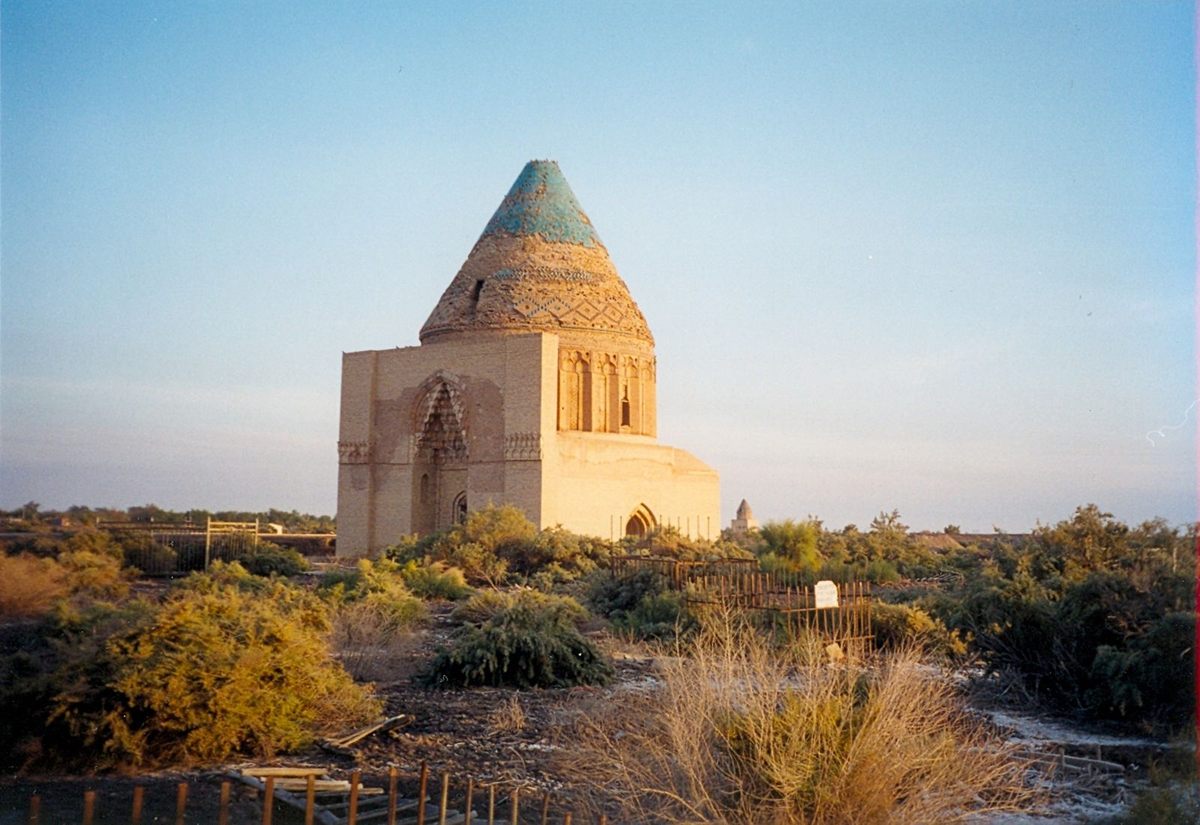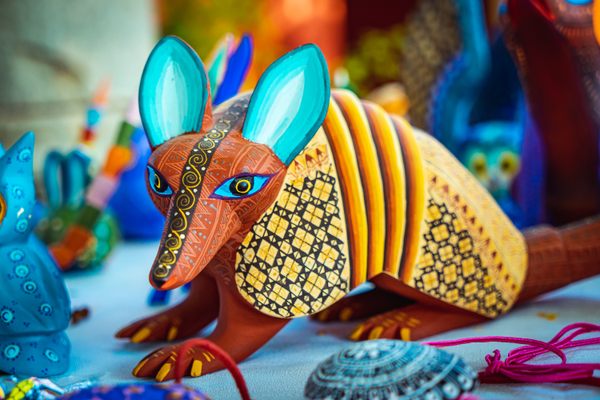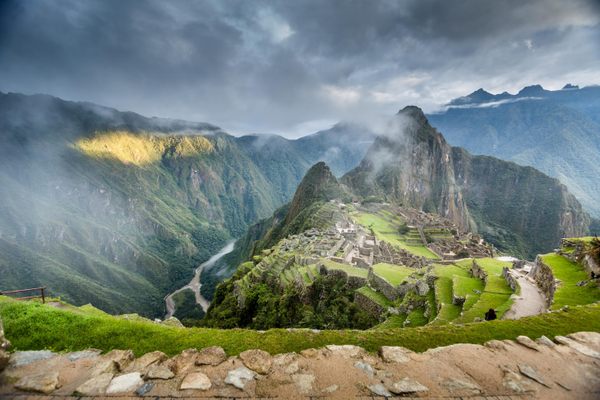
Why You Should Visit Turkmenistan, Land of Contrasts
An expert guide to Central Asia’s most fascinating country.
If you’re looking for a destination that offers fascinating cultural history and very few crowds, Central Asia is for you. Particularly Turkmenistan, where modern excess and Soviet history breathe the same air. For tour guide Gianluca Pardelli, it’s one of the greatest places to bring travelers.
Pardelli is a travel expert with a wealth of knowledge about Central Asia. “I started traveling when I was 19, and I haven’t stopped,” he says. His first career was as a photojournalist, something he still dabbles in; after working for a few travel companies in Italy and Germany, he began his own tour company in 2018, and specializes in the former Soviet Union.
“Turkmenistan is like nowhere else in Central Asia,” Gianluca explains. While it shares common features with other countries in the former Soviet Republic, “it has become a very surreal country since gaining independence. It’s a mix of kitsch and autocracy, with huge golden statues, white marble architecture, and dictatorial pomp.”
He first visited in 2009, and was stunned by the country’s contrasts: the old world still visible in the city’s back streets, the shining white palaces in the middle of the desert. He has been returning ever since, often to lead excursions like Atlas Obscura’s Central Asia trips. As part of Atlas Obscura’s sweepstakes with Cayman Jack Margarita, we’re offering insider guides on destinations that make the perfect summer adventure. Below, Gianluca shares his advice on how to take in this truly unique capital:

Begin with the Bling, But Look Behind it
In Ashgabat, Turkmenistan’s capital, you can’t avoid modernity. The city’s twenty-first century landmarks are shiny and gleaming and reach towards the sky. “It is a capital city that can look fake, and a little bit empty,” Gianluca explains. There’s a palace built like a disco spaceship, an imperious white and gold mosque, and a gargantuan, revisionist monument to independence.
“The new part of the city is kind of a ghost town—most of these new buildings are actually empty,” Gianluca says. “But if you go beyond the facade, there are still dusty backstreets with traditional houses where the common people live.”
This is the fascinating duality of Turkmenistan today: the glitz that the government wants to project, and the daily life of its citizens. “What I want to show my guests is the Turkmenistan that exists beyond clichés and stereotypes,” Gianluca says. “It’s a country made of common people, with a very interesting and unique and spiritual culture.”
Dig Into the Country’s History
Turkmenistan’s heritage makes it an ideal destination for history buffs and the spiritually curious alike. In the older parts of Ashgabat, you’ll still find plenty of traces of its Soviet history. “You still have monuments, Lenin statues, and concrete architecture from the ‘70s,” he says, “the old world behind the new facade.” When he leads trips, he says, he finds ways to interact with local people. “Everyone wants to talk to us, because they don’t see many foreigners,” he says. (Luckily he speaks fluent Russian, the “lingua franca” of the country.) The Soviet neighborhoods were built between the 1940s and 1980s, and “have been left mostly as they were.” This is also where the city’s markets and bazaars are, a quintessential experience when visiting the region.
The Russian Bazaar in Ashgabat is the city’s largest covered market, and one of the largest and oldest in the country. “It’s a huge food market with old babushkas, or grandmothers, that sell everything from fruit to meat to cheese to clothing,” Gianluca says. “They are very loving, very friendly, they like to make jokes and make fun, and they always like to feed you.” His favorite snack to eat there is the chebureki, deep fried dough pockets filled with cheese or meat.

Leave the Capital for the Desert
There is plenty to see outside of Ashgabat, and much of it is desert. You may catch the semi-nomadic shepherds who get around in old Soviet Cars. “It’s like a more friendly Mad Max,” Gianluca says.
One of the country’s most famous natural wonders is the Gates of Hell, a smoldering crater that has been burning in the desert since 1971. (The fire began when a Soviet oil rig accidentally punctured a natural gas cavern, and set it aflame to prevent the spread of poisonous gas.) Once you’ve stared into its depths, go even farther off the beaten path to one of Gianluca’s favorite spots in the country: the tiny desert town of Mary. “It’s really a time capsule; you still feel like you’re in the Soviet Union,” he says. What makes the town truly special, though, is its still-functioning House of Culture. During the Soviet Era, every town had a house of culture, a community center where children went after school for extracurricular activities, and groups put on theater productions. “This house of culture is still active, but more importantly, it’s still working the same way,” Gianluca says. “It hasn’t been renovated, the activities are the same.”
Another favorite desert location is Konye-Urgench, a small city full of active mosques and mausoleums. It’s one of the best places to understand the country’s muslim history and mystic traditions. “It’s not a place for tourists, though tourists are welcome,” Gianluca says. “These are places for local worshippers, for their rituals, pilgrimages, prayers, and chants.” You may even observe mystic dances, a part of the Sufi tradition that has long been practiced in Turkmenistan.
Head to the Sea
If you’re not too tired of sand, head to the beach. Along the western border of Turkmenistan lies the Caspian Sea, and GIanluca loves taking visitors to Turkmenbashi. “It’s one of those rough and ready port towns: no frills, no nonsense, and again, very authentic—it hasn’t been transformed too much,” he says. It offers beautiful views of Krasnovodsk Bay, a vibrant seafood market, and super-relaxed beaches.

Stay Reverent, Stay Respectful
Though you may encounter language barriers, the people of Turkmenistan are very friendly. “Even in the places that are more touristed, there are so few tourists, so that locals are always excited to see foreigners,” Gianluca explains. “Interaction is easy, in that locals want to interact with you.” When interacting with local people here, just keep a few things in mind. First, be sure not to bring up politics, and avoid disrespecting any authorities or government officials, as that could get your conversation partner into trouble if you happen to be overheard.
And whether someone is inviting you to their backyard or welcoming you to a shrine, Gianluca’s rule is always just to follow their lead. “They’re very open-minded, and they do what they like,” he says. As with any new place, respect will get you far.
This post is sponsored by Cayman Jack. Click here to explore more.


































Follow us on Twitter to get the latest on the world's hidden wonders.
Like us on Facebook to get the latest on the world's hidden wonders.
Follow us on Twitter Like us on Facebook